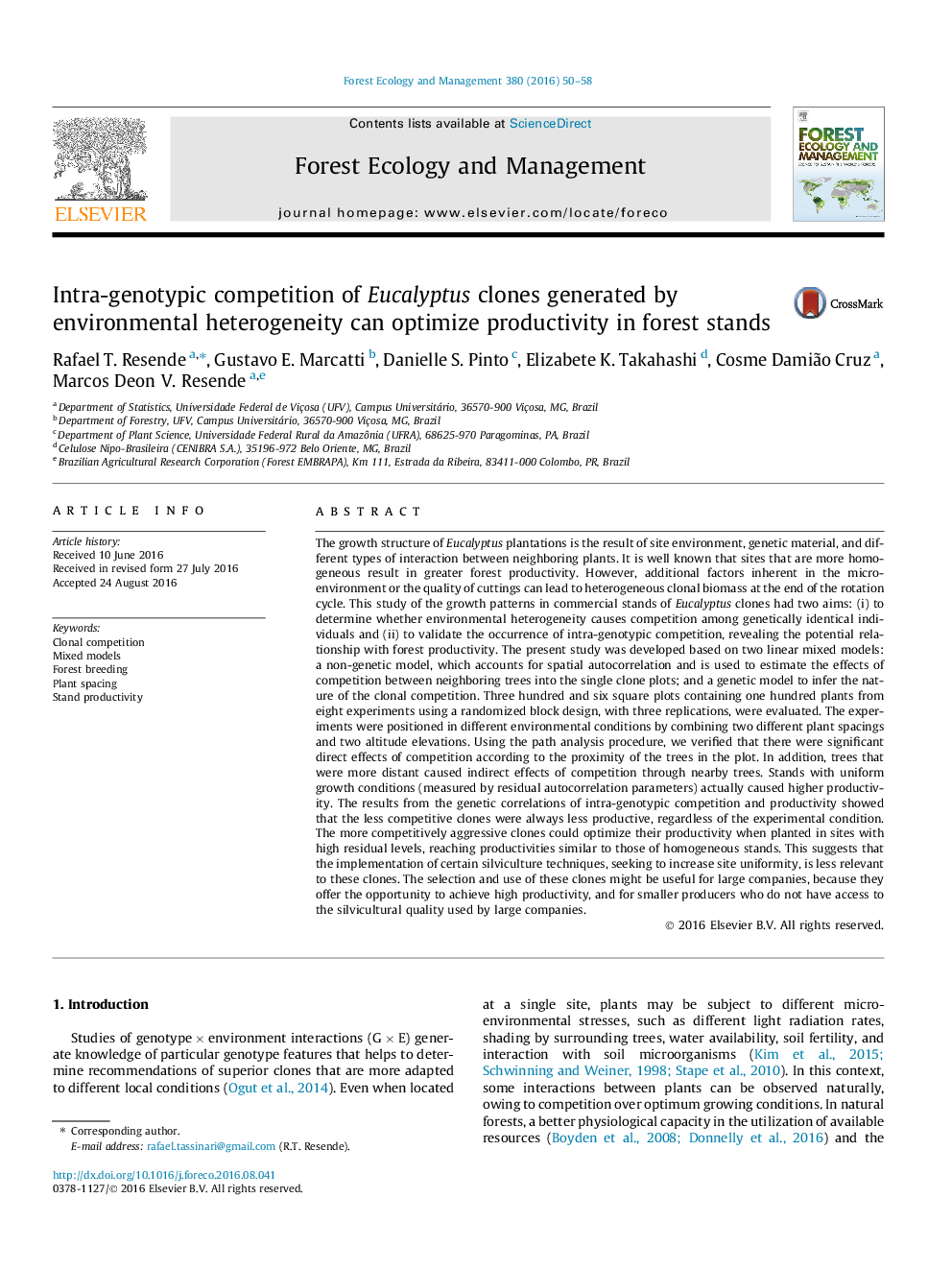| کد مقاله | کد نشریه | سال انتشار | مقاله انگلیسی | نسخه تمام متن |
|---|---|---|---|---|
| 4759660 | 1421378 | 2016 | 9 صفحه PDF | دانلود رایگان |
عنوان انگلیسی مقاله ISI
Intra-genotypic competition of Eucalyptus clones generated by environmental heterogeneity can optimize productivity in forest stands
ترجمه فارسی عنوان
رقابت درون ژنوتیپ کلون های اکالیپتوس ناشی از ناهمگونی محیطی می تواند بهره وری را در پایه های جنگلی بهینه سازد
دانلود مقاله + سفارش ترجمه
دانلود مقاله ISI انگلیسی
رایگان برای ایرانیان
کلمات کلیدی
رقابت کلونال، مدل های مختلف پرورش جنگل، فاصله گیاه، بهره وری پایه،
موضوعات مرتبط
علوم زیستی و بیوفناوری
علوم کشاورزی و بیولوژیک
بوم شناسی، تکامل، رفتار و سامانه شناسی
چکیده انگلیسی
The growth structure of Eucalyptus plantations is the result of site environment, genetic material, and different types of interaction between neighboring plants. It is well known that sites that are more homogeneous result in greater forest productivity. However, additional factors inherent in the micro-environment or the quality of cuttings can lead to heterogeneous clonal biomass at the end of the rotation cycle. This study of the growth patterns in commercial stands of Eucalyptus clones had two aims: (i) to determine whether environmental heterogeneity causes competition among genetically identical individuals and (ii) to validate the occurrence of intra-genotypic competition, revealing the potential relationship with forest productivity. The present study was developed based on two linear mixed models: a non-genetic model, which accounts for spatial autocorrelation and is used to estimate the effects of competition between neighboring trees into the single clone plots; and a genetic model to infer the nature of the clonal competition. Three hundred and six square plots containing one hundred plants from eight experiments using a randomized block design, with three replications, were evaluated. The experiments were positioned in different environmental conditions by combining two different plant spacings and two altitude elevations. Using the path analysis procedure, we verified that there were significant direct effects of competition according to the proximity of the trees in the plot. In addition, trees that were more distant caused indirect effects of competition through nearby trees. Stands with uniform growth conditions (measured by residual autocorrelation parameters) actually caused higher productivity. The results from the genetic correlations of intra-genotypic competition and productivity showed that the less competitive clones were always less productive, regardless of the experimental condition. The more competitively aggressive clones could optimize their productivity when planted in sites with high residual levels, reaching productivities similar to those of homogeneous stands. This suggests that the implementation of certain silviculture techniques, seeking to increase site uniformity, is less relevant to these clones. The selection and use of these clones might be useful for large companies, because they offer the opportunity to achieve high productivity, and for smaller producers who do not have access to the silvicultural quality used by large companies.
ناشر
Database: Elsevier - ScienceDirect (ساینس دایرکت)
Journal: Forest Ecology and Management - Volume 380, 15 November 2016, Pages 50-58
Journal: Forest Ecology and Management - Volume 380, 15 November 2016, Pages 50-58
نویسندگان
Rafael T. Resende, Gustavo E. Marcatti, Danielle S. Pinto, Elizabete K. Takahashi, Cosme Damião Cruz, Marcos Deon V. Resende,
